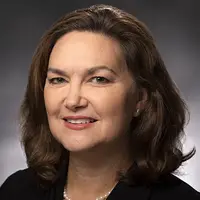The impact of the opioid epidemic on pregnant women and their families is devastating. According to the Centers for Disease Control and Prevention, the number of women who gave birth with an opioid use disorder (OUD) more than quadrupled between 1999 to 2014.1 This increase in maternal OUD corresponds with a similarly alarming escalation in the number of babies born with neonatal abstinence syndrome, a term used to describe the complex withdrawal symptoms infants experience after being exposed to drugs in the womb.
To address this growing crisis, clinicians and policymakers have become increasingly interested in substance use treatment programs that emphasize “family-centered” care. Family-centered delivery models recognize women’s roles as primary caregivers and include their children, partners, and other family members in the treatment process. Designed to be comprehensive and holistic, these models also offer physical and behavioral health services to all affected family members.
During the summer of 2018, RTI’s team of researchers conducted a 21-state scan and interviewed policy officials and providers from four states to learn how family-centered programs are tackling the opioid epidemic. Our interviews revealed that these models show tremendous promise in improving health outcomes for moms and their families impacted by OUD. However, challenges such as limited reimbursement for care coordination, workforce shortages, and stigma towards treating patients with an OUD are limiting their adoption. Full findings of this work are published online.

The number of women who gave birth with an opioid use disorder more than quadrupled between 1999 to 2014.
What is family-centered MAT?
Family-centered treatment has emerged in response to a growing understanding that addiction affects not just individuals but families. In addition to Medication Assisted Treatment (MAT)2, these programs offer pregnant women and family members a broad range of physical and mental health services. Because pregnant women with an OUD typically experience a range of emotional and social challenges, family-centered programs also connect families to community-based services such as childcare, housing, and employment resources to help women sustain recovery.
One innovative example of a statewide family-centered treatment program is the Maternal Opiates Medical Support, or MOMS, program in Ohio. MOMS offers co-located obstetrics/gynecologists and pediatricians on-site so that women can receive critical primary care for themselves and their children while receiving treatment for an OUD. Another model, the Horizons program in Chapel Hill, North Carolina, allows women to reside with their children in an inpatient care facility while receiving MAT. These programs, like many family-centered models, employ case managers and peer support specialists to help women navigate their personalized treatment plan and connect them with local social services post-treatment.
The statewide implementation of family-centered treatment is backed by preliminary evidence. Some studies show that addiction treatment for women that incorporates onsite prenatal care and therapeutic childcare can lead to better outcomes for woman and their infants. For example, family-centered methadone treatment resulted in greater treatment adherence for women and improved birth outcomes for infants.3 The Ohio Department of Mental Health and Addiction found that MOMS participants, when compared to a Medicaid comparison group, were more likely to receive MAT during pregnancy and the postpartum period. These women were also more likely to receive essential behavioral health services.

The statewide implementation of family-centered treatment is backed by preliminary evidence. Some studies show that addiction treatment for women that incorporates onsite prenatal care and therapeutic childcare can lead to better outcomes for woman and their infants.
What challenges do states face in expanding access to family centered care programs?
Despite the promise of these programs, multiple barriers limit the adoption of these models. For example, stakeholders interviewed in our study identified a lack of Medicaid reimbursement for case management and other support services delivered by non-clinical professionals such as peer recovery coaches, patient navigators, and lactation consultants as a prominent barrier. Many of these services fall outside what is considered “traditional” clinical treatment but are considered central to delivering family-centered MAT.
Interview respondents also noted that a shortage of addiction professionals (i.e. clinical social workers, substance abuse counselors, and psychiatrists) as well as physicians and nurse practitioners certified to deliver MAT limits states’ ability to expand access to treatment. Finding trained substance use disorder professionals is particularly problematic in rural areas.
Lastly, provider resistance to treating pregnant patients with OUD further inhibits states’ efforts. Despite clinical guidance from the Substance Abuse and Mental Health Services Administration4, the American College of Obstetricians and Gynecologists5, and the American Society of Addiction Medicine6 that recommends MAT for pregnant women with an OUD, some Ob/Gyns are hesitant to treat these patients. Lack of training and internalized biases contribute to this resistance and may prevent women from getting the care they need.
What can states do to incentivize family centered care and improve outcomes for pregnant women addicted to opioids?
Stakeholders had a number of suggestions for how federal and state policymakers could expand access to family-centered treatment for pregnant women with an OUD:
- Create more sustainable and flexible funding streams for OUD treatment and recovery. States are applying a patchwork of funding sources to support family-centered MAT programs, including Substance Abuse Prevention and Treatment Block Grants, State Targeted Response (STR) funds, and state funds. States are also using Medicaid 1115 Waivers and State Plan Amendments to expand access to MAT. However, many of these funding sources are time limited, making states reluctant to invest in comprehensive treatment programs that might lose financing in 2-3 years. Creating more dedicated funding streams to support states OUD activities would help ensure their longevity in years to come.
- Enable providers to experiment with more Alternative Payment Models (APMs). By incentivizing care integration and care coordination , APMs allow providers flexibility to design innovative programs that meet the needs of pregnant women and families impacted by OUD. The Centers for Medicare & Medicaid Services recently announced additional support for APMs with its recent funding announcement for states to implement a Maternal Opioid Misuse Models (MOM) designed to foster the coordination of clinical and non-clinical care for pregnant and postpartum women with OUD.7
- Incentivize and train more health care practitioners to become certified MAT providers. To combat stigma and reduce anxiety about treating patients with an OUD some states have enlisted the help of certified MAT practitioners to mentor and coach other physicians on the importance of delivering MAT to patients with an OUD.
Just as addiction affects the whole family, it too can be treated within the family context. Given the devastating consequences of the opioid epidemic on mothers, children, and families, states would be wise to develop and fund more family-centered programs like these.
References
1 Centers for Disease Control and Prevention. Morbidity and Mortality Weekly Report. August 10, 2018. Opioid Use Disorder Documented at Delivery Hospitalization – United States, 1999 – 2014. https://www.cdc.gov/mmwr/volumes/67/wr/pdfs/mm6731a1-H.pdf
2 MAT is an evidence-based practice that uses an FDA-approved medication – typically methadone, naltrexone, or buprenorphine – in combination with counseling to reduce dependence on opioids. It is considered an appropriate and accepted treatment for pregnant and postpartum women.
3 Milligan, K., Niccols, A., Sword, W., Thabane, L., Henderson, J., Smith, A., & Liu, J. (2010). Maternal substance use and integrated treatment programs for women with substance abuse issues and their children: a meta-analysis. Substance Abuse Treatment, Prevention, and Policy,5(21). doi:10.1186/1747-597x-5-21
4 Substance Abuse and Mental Health Services Administration. Clinical Guidance for Treating Pregnant and Parenting Women With Opioid Use Disorder and Their Infants. HHS Publication No. (SMA) 18-5054. Rockville, MD: Substance Abuse and Mental Health Services Administration, 2018.
6 https://www.asam.org/docs/default-source/practice-support/guidelines-and-consensus-docs/asam-national-practice-guideline-supplement.pdf?sfvrsn=24


